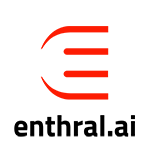SaaS vs Customization vs Configurability: Understanding the Differences and Advantages

Think about the last time you travelled to a fun destination. You may have spent some time thinking if you should go for a popular all-inclusive resort, craft a unique adventure, or find a flexible package that accommodates both?
Finding the right eLearning solution is somewhat like that. You may need to think about choosing between a Software as a Service (SaaS) LMS/LXP, a custom LMS/LXP, or a configurable LMS/LXP.
Each approach comes with its own set of benefits (at times even potential drawbacks), and understanding these can help you select the option that best aligns with your organization’s needs and goals.
In this blog, we will explore the key differences and advantages of SaaS, customization, and configurability in learn tech platforms.
Understanding SaaS, Custom and Configurable LMS/LXP
To understand how a SaaS learning platform works, I am going to go back to our travel analogy.
A SaaS LMS/LXP is like booking a stay at an all-inclusive resort. It’s a cloud-based solution that provides comprehensive learning management functionalities without the hassle of local installation or maintenance. You pay a subscription fee, and in return, you get easy access to the platform, along with hosting, regular updates, and customer support. It is convenient, user-friendly, and keeps everything running smoothly behind the scenes.
On the other hand, a custom LMS or LXP is like creating your own adventure. This solution is developed to meet the specific needs of your organization. Whether you are building it from the ground up or significantly modifying an existing platform, a custom learning platform allows you to incorporate tailored features and functionalities that align perfectly with your goals. It is personalized, flexible, and designed to offer exactly what you need.
Finally, a configurable LMS/LXP offers a bit of both worlds. Configurable learning platforms provide a foundation with built-in functionalities while allowing you to tweak and adjust settings to better fit your organization’s specific requirements. It’s adaptable, versatile, and gives ease of use.
Also Read: A Comprehensive Guide to Finding Your Perfect Learning Platform
Comparing SaaS, Custom, Configurable LMS/LXP
Choosing the right LMS/LXP is key to ensure that your L&D strategy works the way you want it to.
Comparing all three options on different fronts can help you pinpoint which approach aligns with your budget, flexibility needs, and long-term goals so that the decision becomes smoother.
1. Cost
When it comes to cost, SaaS learning solutions are generally more budget-friendly upfront. They involve predictable subscription fees that cover hosting, updates, and support. This makes them an attractive option for organizations that have a specific budget to invest in a learn tech platform.
On the other hand, custom solutions require a significant initial investment. This includes costs for development, infrastructure, and ongoing maintenance. Configurable LMS/LXP platforms involve moderate costs for the initial setup. Also, the cost element could differ based on the extent of configuration requirements you have.
2. Implementation Time
SaaS LMS/LXP platforms are typically quick to deploy, offering ready-to-use features that enable organizations to start training programs almost immediately. In contrast, custom LMS/LXP solutions take longer to develop and implement, which can delay the rollout of training initiatives.
Configurable LMS/LXP platforms fall somewhere in between. They are generally faster to implement than custom solutions but may require some time to adjust configurations to fit your needs.
3. Customization and Flexibility
These factors vary significantly among each option. SaaS LMS/LXP platforms offer limited customization and they are primarily about the configuration options provided by the vendor.
Custom LMS/LXP solutions provide more flexibility. They allow organizations to build features and workflows that match their training needs. Configurable LMS/LXP platforms offer customization through built-in settings which could take more time again depending on needs.
4. Maintenance and Updates
On this count, SaaS LMS/LXP solutions offer the most advantage since the vendor handles all maintenance and updates upfront. This reduces the burden on internal IT teams and ensures the system remains up-to-date.
In contrast, custom LMS/LXP solutions place the responsibility for maintenance and updates entirely on the organization. This means dedicated IT resources and ongoing investment are required. Configurable LMS/LXP platforms include automated updates and support from the vendor, but that depends on the specific vendor to a great extent.
5. Scalability
SaaS LMS/LXP solutions are inherently scalable as they allow organizations to adjust their subscription plans based on user numbers and usage. Custom LMS/LXP solutions may require additional investment to scale, depending on the initial design and infrastructure. Configurable LMS/LXP platforms are also designed to scale with organizational growth to some extent.
6. Control and Independence
SaaS LMS/LXP platforms come with some dependency on the vendor for troubleshooting and feature requests. However, a vendor who offers robust support and regular updates can ensure that the system remains reliable and up-to-date while minimizing the burden on your internal resources.
Custom LMS/LXP solutions provide control over the system, data, and security measures, allowing for independent adjustments. But the onus is entirely on the internal IT team which can at times be overwhelming. Configurable LMS/LXP platforms provide control within a structured framework while still depending on vendor support for complex needs.
Key Takeaways
Selecting the right learning platform—whether it is SaaS, custom, or configurable—boils down to your organization’s unique needs, budget, and objectives.
SaaS delivers seamless convenience and budget-friendly pricing, custom solutions give more flexibility but come at a higher cost and configurable platforms are more user-friendly, but again at a cost that revolves around needs. Understanding the advantages and differences of each helps you choose wisely.











